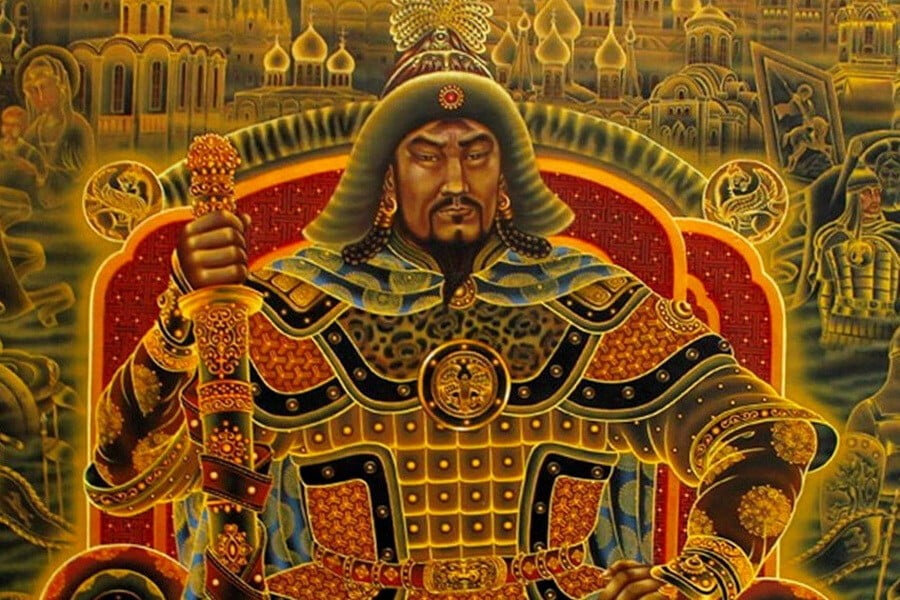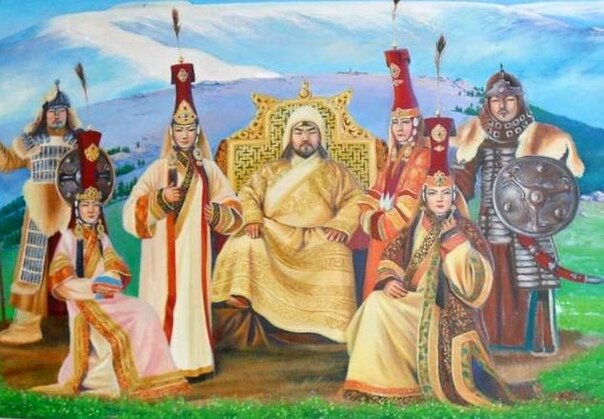In the 13th century the concept of «nationality», especially in the sense in which we know it now, did not exist. But there is a question of ethnicity. And here it is for Genghis Khan remains controversial. Along with the ancient legendary tradition, which states that Genghis Khan was a Mongol, there is also a rather old tradition, according to which he was a Turk. And recent genetic studies of Genghis Khan’s possible relatives who lived a generation before him have brought a sensation.
Mongolian relatives of Genghis Khan
Temujin, as Genghis Khan was called in childhood, according to the «Hidden Tale» of the Mongols, comes from the Borjigin dynasty. The father of the great conqueror Yesugei was one of the grandsons of the first khan of all Mongols Khabul. Genghis Khan’s mother was Oelun of the Mongolian tribe Olkhonut, whom his father kidnapped after falling in love with her.
Yesugei was feuding with the Tatar tribe. On the eve of his son’s birth, he captured and killed a noble Tatar named Temujin. According to some superstitions, it was decided to name the child after the killed (or ritually sacrificed?) noble captive. The Tatars, according to this tale, were also a tribe of Mongol root.
When Temujin, Esugei’s son, was nine years old, the Tatars managed to poison Esugei insidiously. Temujin underwent many adventures before he became an adult. Subsequently, he avenged his father’s death by killing all the adult men of the tribe. By chance, individual Tatars survived. To this day there are clans among the Mongols who trace their ancestry back to these Tatars. But basically the name of Tatars has been mechanically transferred by Europeans to many Turkic peoples who came to Europe together with Mongols of Genghis Khan.

Descendants of clan Borjigin (Borjigon) now make the fifth part of the population of Mongolia, and each fourth Mongolian belongs to the same Y-chromosome haplogroup, characteristic for the majority of representatives of Borjigin. There are many Borjigins among other peoples of the Mongolian group: Buryats, Kalmyks, and Oirats.
Indications of Turkic kinship
It would seem that everything is clear. However. Why Temujin was nicknamed by the great khan — Genghis Khan — in the Turkic manner? And what does the name Temujin mean in Mongolian? How is it etymologized? In the clan name Borjigin the root Bor-, according to many linguists, indicates a light gray color.
Very curious in this regard is the report of the 14th century Persian historian Rashid ad-Din that Borjigin means «blue-eyed». In his time, he claimed, the representatives of this clan were distinguished by blue eye color and red hair.
And the «Hidden Tale» of the Mongols says that Alangoa, the ancestress of the Mongols, conceived Bodonchar, who became the founder of the Bodjigin family, from a red-haired or russet-haired man. According to another ancient version, Alangoa gave birth to Bodonchar from a domestic servant named Maalih. Judging by his status, Maalih was most likely not a Mongol, but a Turk.

According to ancient Chinese chronicles, many Turkic tribes were red-haired. Russian traveler and ethnographer of the late 19th century Grigory Grumm-Grzhimailo described tribes of red-haired Turks in Central Asia, on the territory of Chinese Xinjiang. Among the Kazakhs of the Elder Zhuz at the same time there still existed a tribe of Sary (redheads), distinguished by this feature. And in the old days all Kazakhs of the Elder Juz (Uysuni) were like that, according to legends.
Lev Gumilev considered red-haired and blue-eyed population of deserts and steppes of Central Asia as descendants of ancient Cro-Magnoid (proto-European) race. Turkic peoples, known on history of Ancient Russia — Bulgars, Polovtsians — belonged to it and were Europoid.
Among Turkic peoples there are many descendants of Genghis Khan. So, at Kazakhs there is a whole group of clans ascending to it — Tore. They too are characterized by a common haplogroup. However all of them can be Turkicized descendants of Mongols. How to find out, what ethnic roots were at Genghis Khan?
Did Genghis Khan’s ancestors come from Europe?
All those who are now considered to be descendants of Genghis Khan, regardless of ethnicity, have a male haplogroup of C2a.
In 2016, South Korean and Mongolian scientists excavated a rich burial site at Tavan Tolgoi in the Mongol Republic. According to local legend, members of the Borjigin clan, into which Genghis Khan was born, were buried here. Radiocarbon analysis showed that the burial was made around 1130, that is, a generation before Genghis Khan’s birth (1155).
Genetic tests of the buried were sensational. It turned out that the men who lay in the graves of Tavan Tolgoi, Y-chromosomal haplogroup — R1b.
Haplogroup R1b is most often found in Germanic and Celtic peoples of Western Europe. It can indicate the western, European origin of Genghis Khan. Especially — in combination with such his features, which are indicated by medieval legends, such as blue or gray eyes and red or blond hair. But haplogroup R1b are also found in Turkic peoples such as: Uzbeks, Kirghiz, Bashkirs, Tatars and so on. Even one of Egyptian pharaohs (I do not remember who exactly) also found with haplogroup R1b.
In this case the number of ethnoses — candidates for the role of Genghis Khan’s ancestor — increases exponentially. To specify unequivocally among Indo-European peoples that from which could occur Genghis Khan — it is resolutely impossible.
True, the results of the study of scientists have been sharply criticized, especially by those who consider themselves descendants of Genghis Khan. But it is not known when in Genghis Khan’s family there was a change of the true male ancestor — maybe it happened not with the parents of Genghis Khan himself, but earlier. In addition, the traditional interpretation of the burial may be wrong. Local legends could be something and confused, and in fact here were buried here were not Borjigin. So don’t believe anyone, not even this article).
